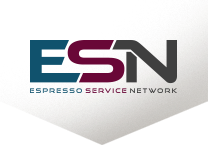Resources
What to Look for When Buying a Used Espresso Machine
September 14th 2018
Owning an espresso machine can be invaluable for any business, but ensuring its consistent operation is critical—few things deter customers faster than an “Out of Order” sign. Below are key steps and tips for evaluating a used espresso machine:
1. Check Parts Availability
- Start by contacting the machine’s manufacturer to confirm if they are still producing parts for the model you’re considering. Pay attention to electronics; these are often integral to the machine’s operation and may be hard to replace if discontinued.
- Remember, most manufacturers do not sell directly to the public, and local service providers may only stock general maintenance items. Confirm with your local provider that they can obtain either original parts or, at the very least, reliable aftermarket parts to keep your machine in top condition.
2. Evaluate Service Support
- Speak with your service company about their willingness and capability to support your machine, especially if it’s an uncommon model or lacks a service history. This ensures you won’t be left unsupported if something goes wrong.
3. Inspect Key Components
Group Heads: Over time, group heads may leak or wear out, leading to brewing inconsistencies. Replacing group heads can be costly, so assess their condition carefully. Look for signs like shimmed gaskets on new portafilters, which indicate wear. Also, check that group head screws are uniform; oversized screws may signal stripped threads.
Boilers: Copper boilers, in particular, can weaken and scale over time. A boiler more than 10 years old in consistent use may be near the end of its lifespan. Excessive mineral buildup, often visible after removing the boiler cap or heating element, is another red flag.
4. Evaluate the Cost of Repair vs. Replacement
- Used machines can present great deals, but significant repairs may outweigh the savings. For example, descaling an old machine is labor-intensive and costly, as it requires dismantling to ensure all mineral deposits are removed. Leaving scale in the system can lead to clogs and unexpected breakdowns.
5. Assess the Machine’s Service History
- Machines from recently closed businesses are less likely to have been properly maintained. Those from businesses upgrading equipment may also be nearing the end of their useful life. Request service records or speak with the previous service provider for insight into the machine’s condition and maintenance history.
6. Get a Professional Inspection
- Whenever possible, have a technician inspect the machine to identify any hidden issues. If the machine isn’t operational, repair it first to allow a complete assessment. Professional evaluations usually take 90 minutes, but may take longer if plumbing or electrical setups are involved. An inspection fee is a worthwhile investment to avoid unexpected repairs.
Remember: A well-informed purchase reduces the risk of costly repairs down the road. Take advantage of your espresso service provider’s knowledge to find the best value. You can locate a provider through the Espresso Service Directory
If you have feedback on this guide, reach out to us at solutions_usa@esnservices.org—We would enjoy hearing from you.
Back to Articles


